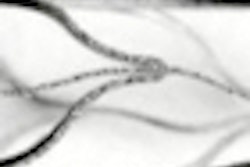A California dentist is using painting techniques originated by Leonardo da Vinci when the Renaissance master created Mona Lisa and her famous smile.
Scientists from the Centre for Research and Restoration of the Museums of France recently used high-tech scanners to examine the Mona Lisa and found that da Vinci used up to 30 extremely thin layers of paint -- each about half the width of a human hair -- according to Grace Sun, DDS.
Similarly, Dr. Sun, who practices in Los Angeles, uses multiple shades and layers of porcelain powder to create veneers and crowns. She employs her skills as a ceramist to layer feldspathic particles and glaze, just as da Vinci layered paint and glaze for natural-looking effects, she explained in a press release.
"Leonardo knew that the complexity of human features and skin could only be duplicated by using many layers of paint made from a variety of metal oxides," Dr. Sun said. "Lifelike porcelain restorations for teeth must also reproduce the optical quality of the many layers of tooth structure. I use the same techniques as Leonardo to create these layers with a variety of porcelain powders."
When creating a porcelain tooth, she chooses the various tints, shades, values, chroma, and hue of the porcelain powder when creating a porcelain tooth "thoughtfully," she said, as the slightest variation can affect the final look of the restoration.



















